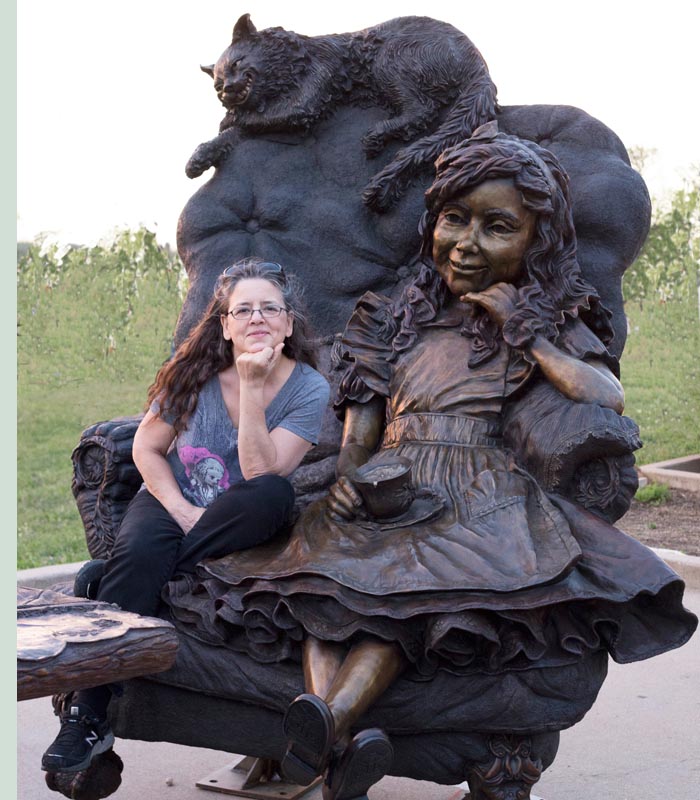Digital Process in Fine Art
Sculptor Bridgette Mongeon has been exploring 3D Technology in fine art for many years. She even wrote a book on it titled 3D Technology in Fine Art and Craft: Exploring 3D Printing, Scanning, Sculpting, and Milling. She is as curious as Alice.With her Alice in Wonderland project titled "Move One Place On," Bridgette used digital Technology in spades, or should we say "hearts." This project was an opportunity to push the limits in art and technology, which she is still doing today.
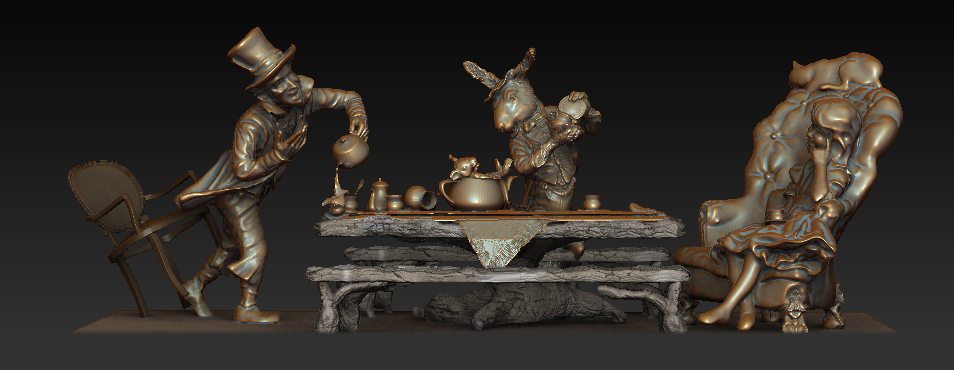
Starting in clay and making a digital model.
With Alice and her friends, Bridgette started with a small, very rough sculpture for the scene. She then scanned that into the computer using a 3D scanner. From here she progressed to a digital model.
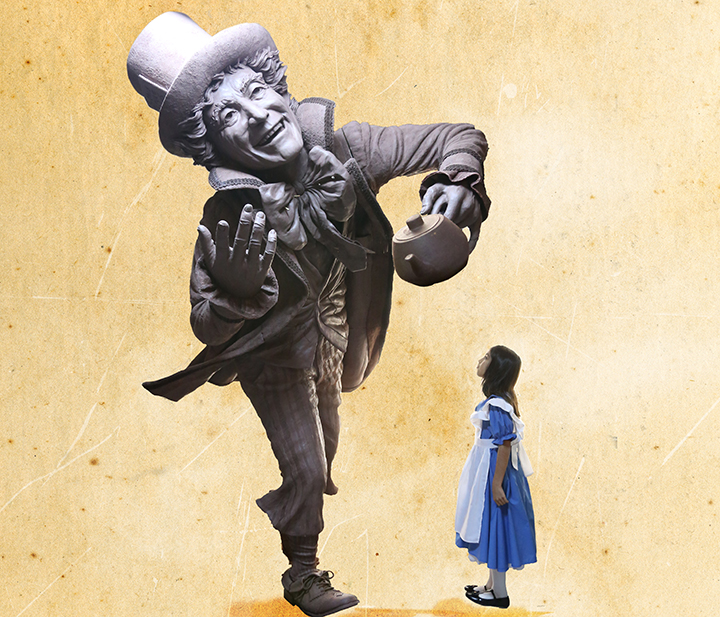
In my studio, Alice and her friends get big and small, not with mushrooms and elixirs but with digital technology.
Clay to 3D scan to digital model
Once the sculpture was in the computer as data, she could modify it more. Bridgette moves from a virtual space to a real object and back again. She lives in these two worlds. Just as Alice travels through books, holes, and doorways, Bridgette travels through digital technology and back again. Sometimes for Bridgette, working digitally is easier. Sculpting a tiny cup and a watch in clay is hard. It is much easier to create a little teacup and a watch on the computer. Once she completes the digital sculpting, she has to get the art out of the computer and into a physical form.
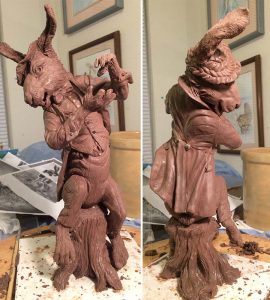
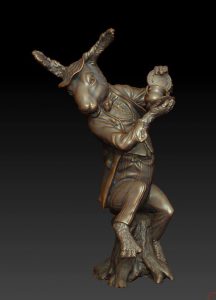
"For me, as a sculptor, if I can’t get it out of the computer it is useless."
The Magic of CNC Milling
After 3D scanning and working on the sculpture in the computer Bridgette has the March Hare 3D printed as reference, and also enlarges the sculpture to nine feet tall using Computer Numerically Controlled milling (CNC). With this process, her vendor mills the entire sculpture out of dense urethane foam. The foam acts as an armature. The armature is not finished yet as the artist still needs to sculpt the foam. She must carve into the foam and then add a layer of clay to allow more detail. Watch this video to see the magic of CNC. It is cued to the CNC milling.
"With my pieces 'OFF WITH THEIR HEAD!' is a given, in fact the foam arrives in many pieces." -Bridgette
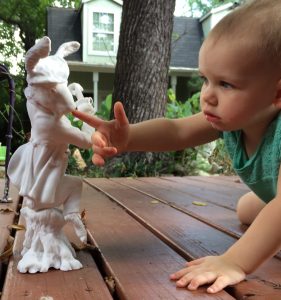
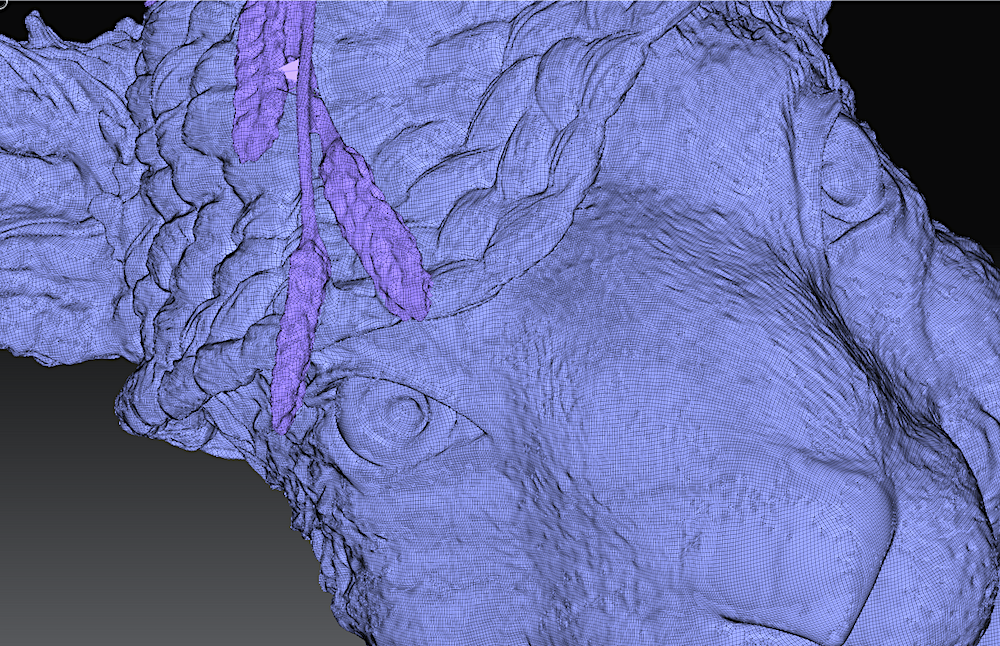
Digital data gives the artist a mesh that her vendors use to go big or small, just like Alice gets big and small. But, unlike Alice, Bridgette has control of size with technology.
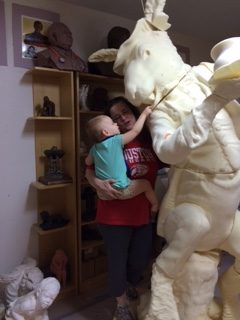
The Dance of a Sculptor with Fanciful Characters
Carve foam, add clay, and add detail is a dance that Bridgette does with each monumental character until it is complete and ready for approval.
Is this the end of Bridgette's use of digital technology and the fine art for this project? Not by a long shot. Bridgette wants to push the limits and do some unusual things the technology is so interesting you just won't believe what she can do.
"Why, sometimes I've believed as many as six impossible things before breakfast."
-White queen

More Curious Adventures Pushing 3D Technology in Wonderland
The sculptor decided to hide 150 things in the sculpture in honor of the 150th anniversary of the publication of the story. She did this with both traditional sculpting and digital technology. For example, look at all of the buttons. Bridgette designed the buttons, sculpted them digitally, and then had them 3D printed. She then embedded each button into the clay before it went through the mold making process of bronze casting.
The teacups on the table. They are replicas of the artist's mother's teacups. She 3D scanned them and then enhanced them using a digital sculpting program. This mix of traditional and digital sculpting partnered with intrigue are throughout the entire sculpture.
Curiouser, and curiouser!
Alice in Wonderland
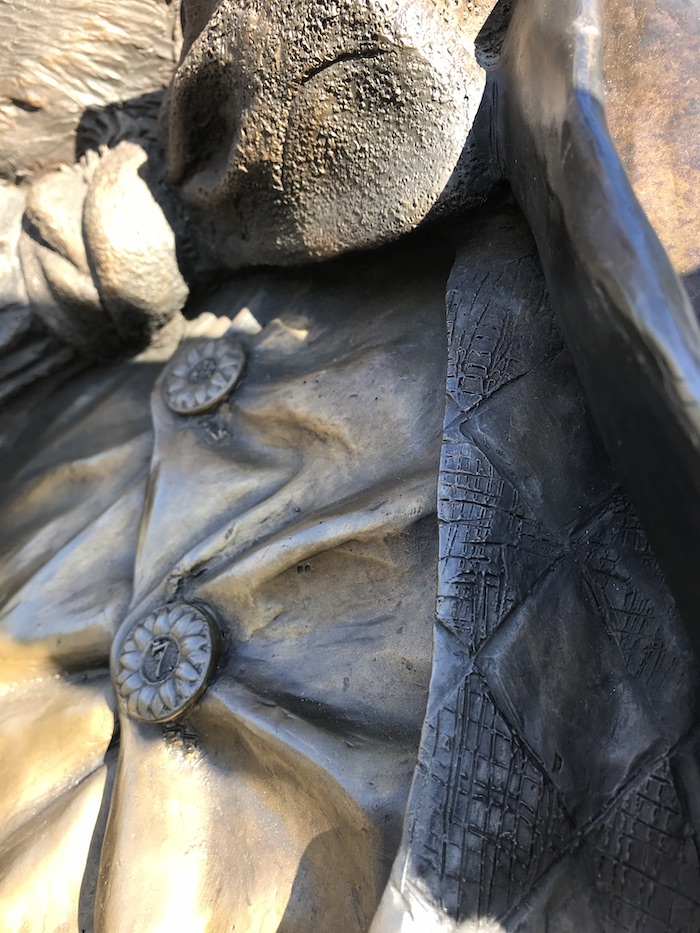
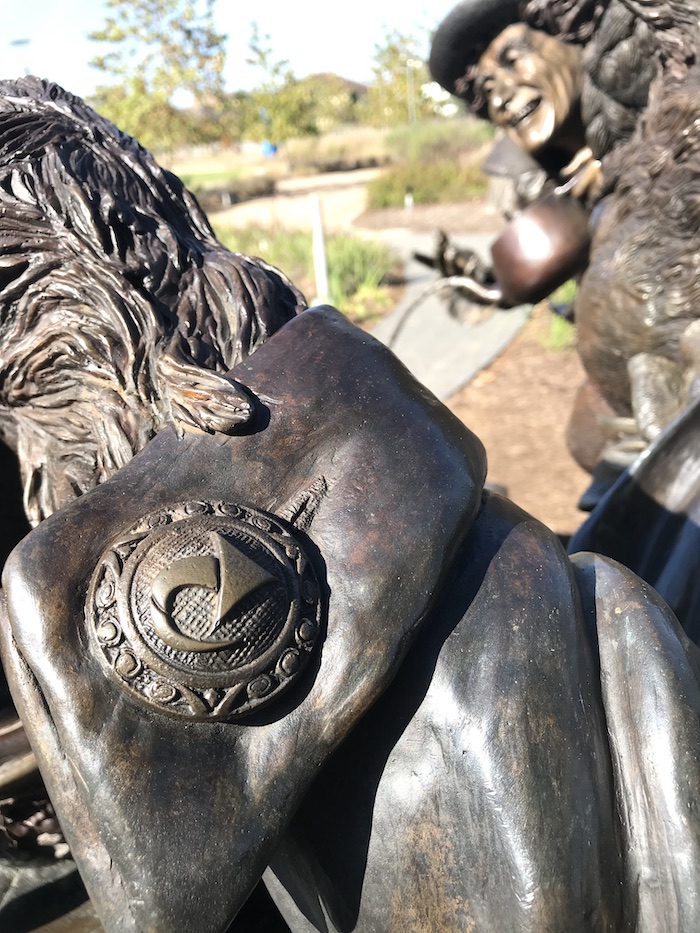
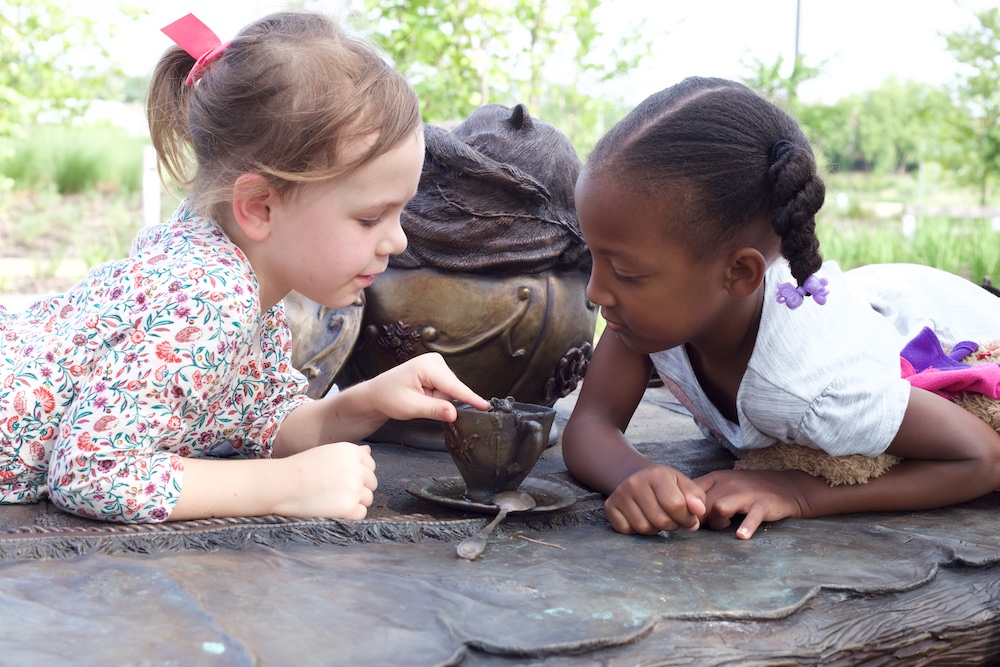
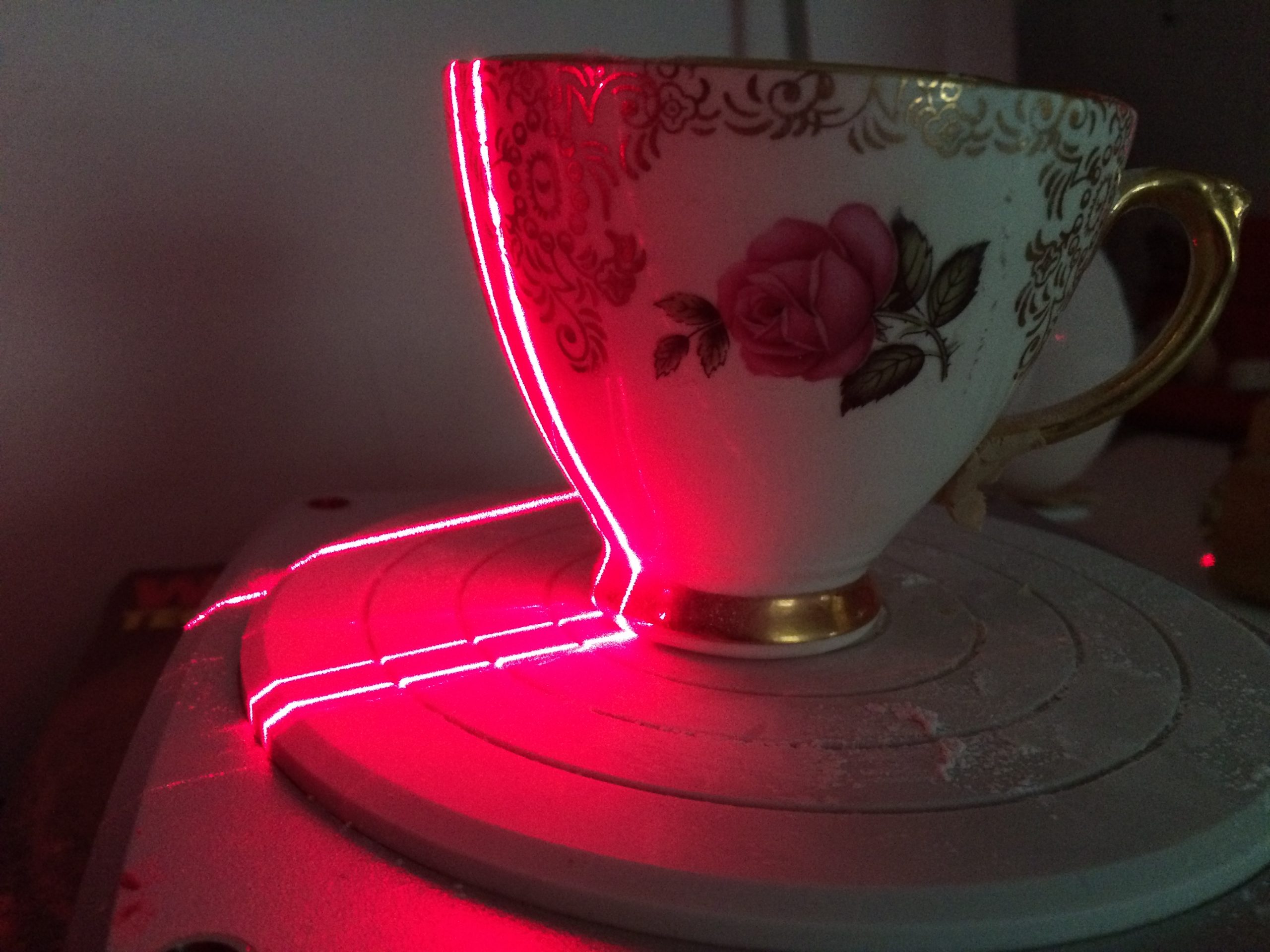
Can you 3D print in bronze?
Alice and her friends went through the traditional process of bronze casting. You can read about it in the Alice blog or learn about bronze casting from the process pages. However, Bridgette has spent years researching, exploring, and following vendors to see how digital technology can infiltrate the age-old bronze casting process.
You can 3D print in bronze; however, it is not cost effective with large sizes. You can also 3D print a sculpture to go to the foundry in a variety of other materials. That means, that if you can 3D print a statue for investment casting, you do away with the mold and wax stages that Bridgette has discussed in her process pages. 3D printing for investment casting cuts out many of the expensive and challenging steps of the lost wax method of bronze casting.
If you have a project that might need a mix of digital and traditional, give the artist a call. We you can do more than what you might think.
There is so much to discover with digital technology. Even after Bridgette installs Alice and her friends, she is not done pushing the limits.
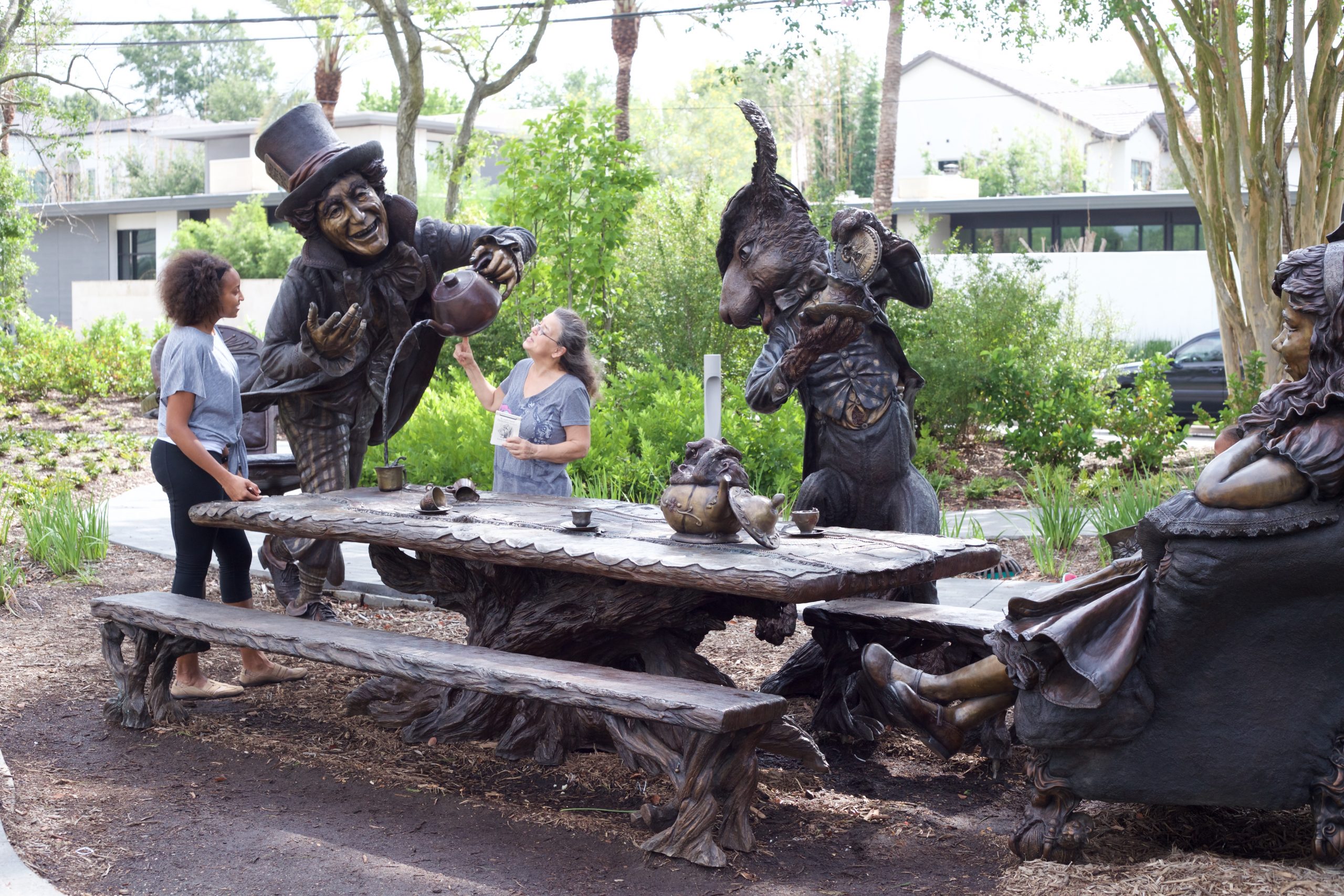
"You don't know what you can do, until you know what you can do. Technology is ever advancing and exciting to explore."
Sculptor Bridgette Mongeon
Alice and her friends go back to a digital world.
Wait! We just got Alice and her friends out of computer land and into bronze and now you are going to put them back in? Yes. A lot of detail was added to the sculpture in clay and now Bridgette is making a small table top version just like the sculpture in the park. How? Intertek scanning company spends a few nights at the park with Bridgette as they do some blue light scanning on Alice and her friends. Intertek usually uses this type of scanning to document such places as oil refineries. It is very detailed. So this is a change for them. But, scanning art and our cultural heritage is not unusual. The organization CyArk scans art and monuments all around the world. Many museums like the Smithsonian also are scanning and sharing their art.
For The Alice In Wonderland scans, first, each piece is covered in small registration dots. The dots will help the computer to register all the scans. It takes 9 hours to scan Alice. Next, Bridgette takes all the scan data into the computer. She must make sure that the data will translate to a small version. She does have to make some modifications so that texture and detail will show up once it is small.
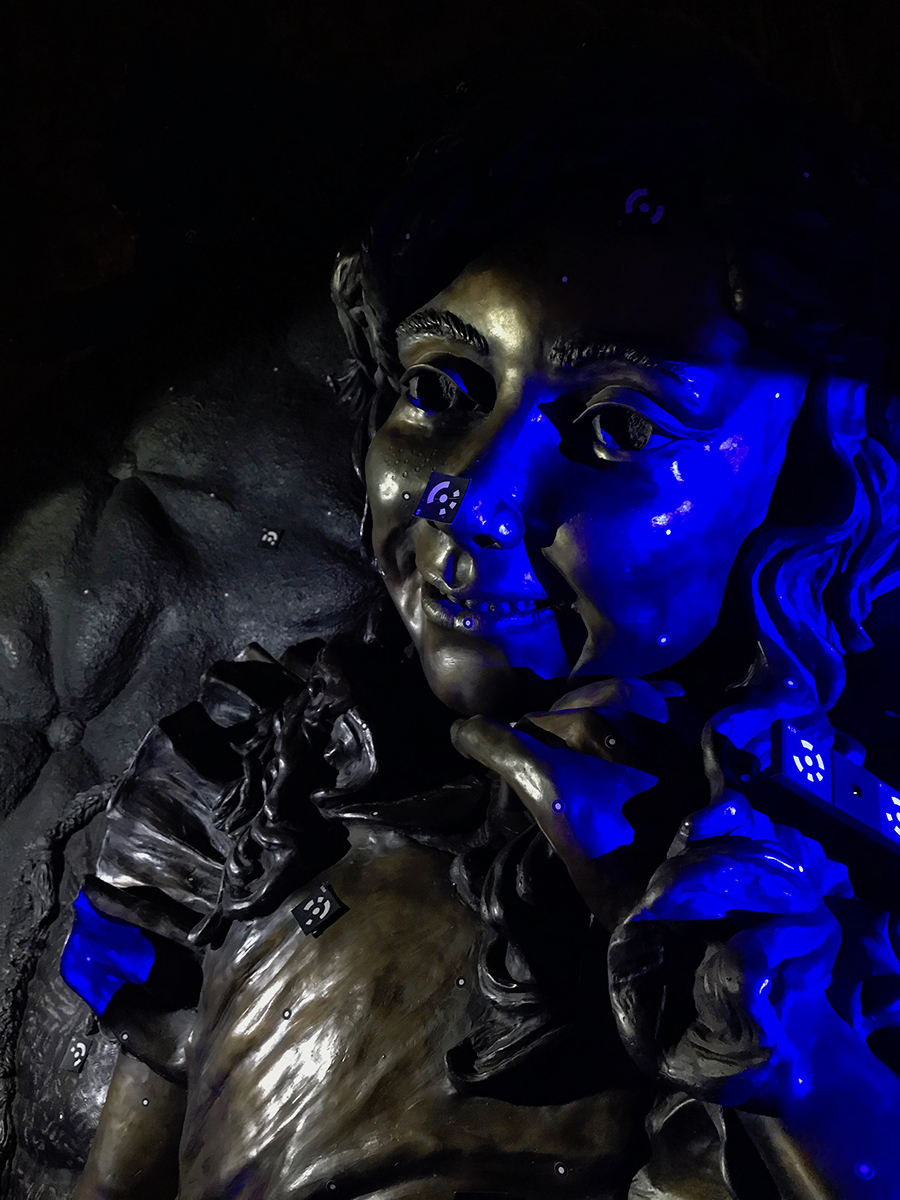
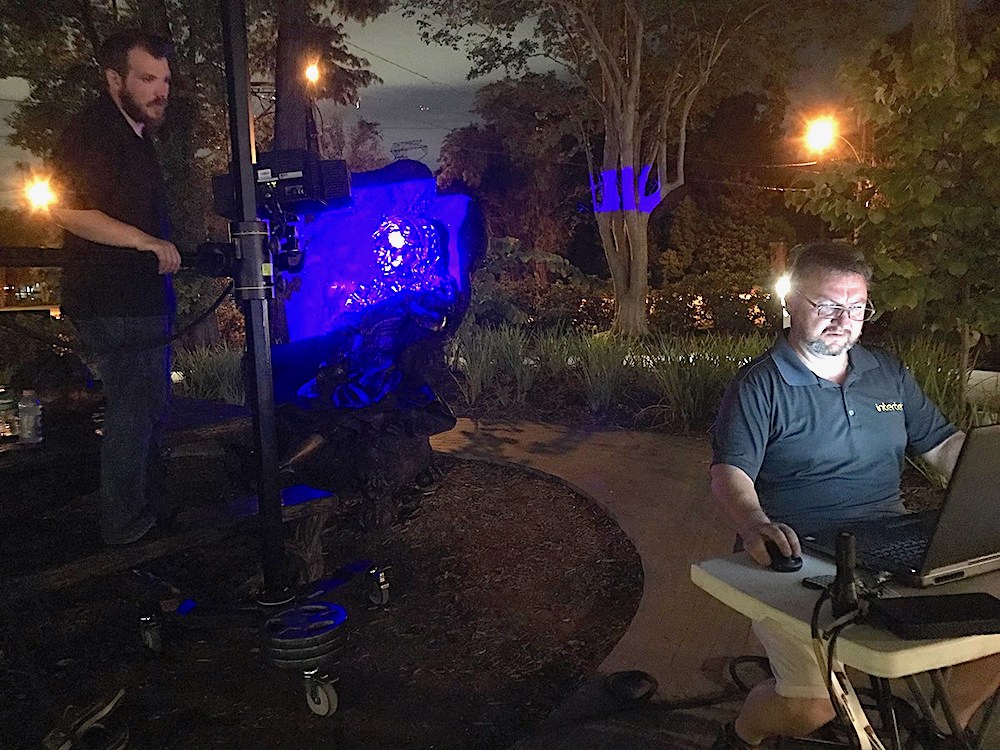
I can't go back to yesterday because I was a different person then.
Alice in Wonderland.

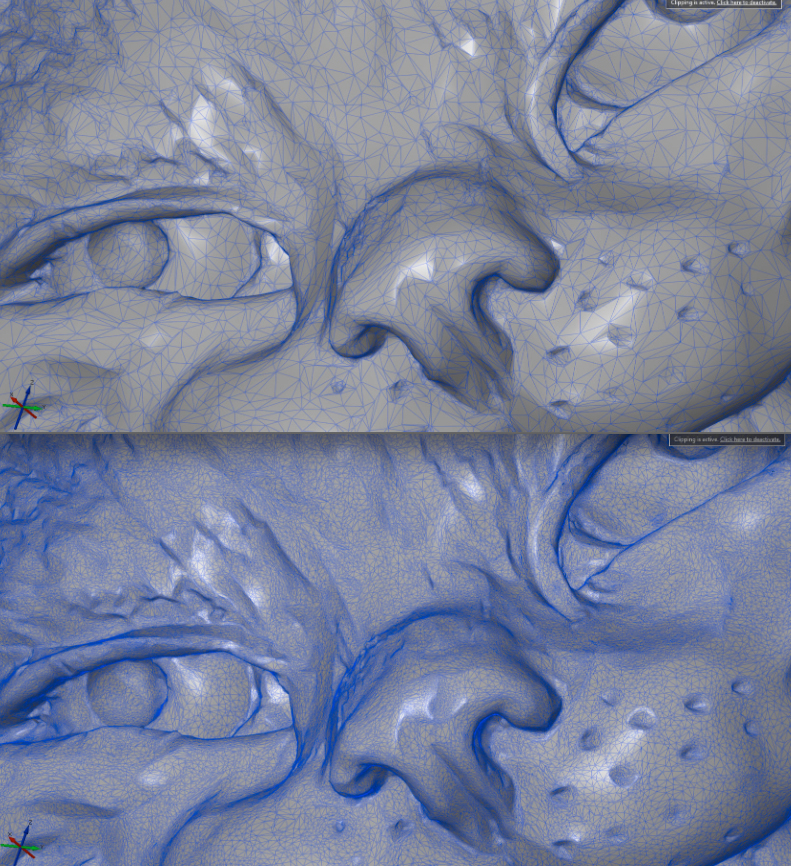
After she works the pieces in the computer, she will print them out at both 10 inches and 14 inches. They will then go through the bronze casting process. These are the two sizes available for the limited edition table top bronzes that are for sale. Order now for the first in the edition. Stay tuned for those images.
Another scan? How is this different from the blue light scanning? How will the artist use this scan?
While at Evelyn's Park, Intertek and the artist do one more scan. This scan is different than the blue light scanner. Intertek adds registration balls around the park and places the scanner in different areas capturing data. The registration balls help the data to be stitched together on the computer. This scanner is scanning the entire park area where Alice and her friends sit at a perpetual tea party. Bridgette hopes to find a college that will jump down the rabbit hole and use this scan along with coding to create a walkthrough and an educational feature for the Internet. For example, when you are trapped in Bridgette's virtual world, you can click on the Mad Hatter's hat. Here, in a pop-up menu, you will discover the reason why hatters were called mad. It was because of the arsenic used in their felting. It poisoned them making them go "mad". Or perhpas you woudl like to search the sculpture for some of the 150 hidden objects that Bridgette put in the sculpture and reveals through riddles and rhyme. If you know of a college that might be interested in this magical journey, please have them contact Bridgette.
Where should I go?
Alice.
That depends on where you want to end up.
The Cheshire Cat.”

Certainly that must be it for the technology and this Alice in Wonderland creation?
Reducing and enlarging the 150 hidden things.
Hardly, Bridgette and her team are working together to take some of the 150 hidden things, reduce them down and make them into collectible ornaments. She has a long road ahead of her with digital technology and her Alice in Wonderland Sculpture. If you are interested in purchasing some of the hidden collectibles visit the Alice Sculpture website.
Education
Bridgette hopes to encourage others to create educational resources and materials using the story of Alice in Wonderland. Collecting these tools and putting them on her website for others to use is her goal. She is especially interested in those teaching tools that work with Science, Technology Engineering Art, and Math (STEAM) or (STEM).
A Famous Teapot
Let's not forget about the famous teapot, one of the 150 hidden things in the sculpture. Bridgette is revealing the 150 things through riddle and rhyme through social media and special lectures. Here is the riddle for this famous teapot. If you are into technology you probably know the answer. If you have not guessed, just follow this post to find the answer.
Tech marries clay in Wonderland,
The Hatter steps in and lends a hand.
Not from Texas, but Utah it came.
Not victorian but rather plain.
Because Sandra and Martin liked their tea,
an homage to a man you now do see.
Check Out the Next Steps in the Process...
Let's talk about the possiblities of technology,
fine art, and your project.
